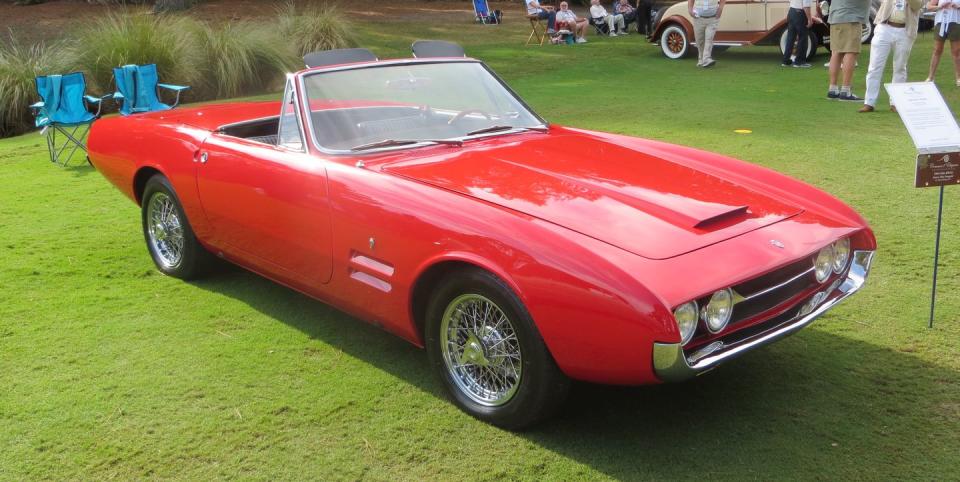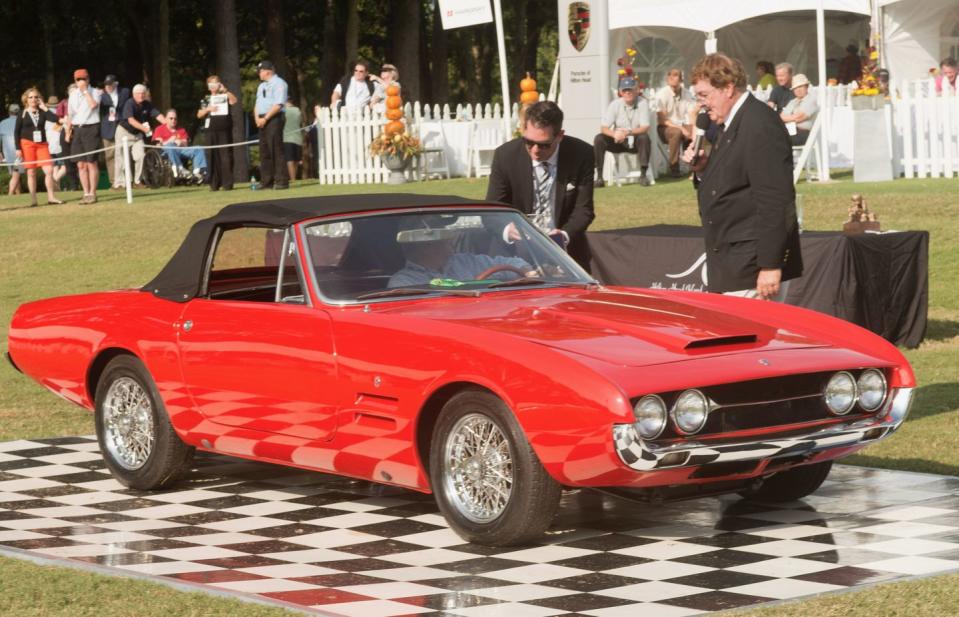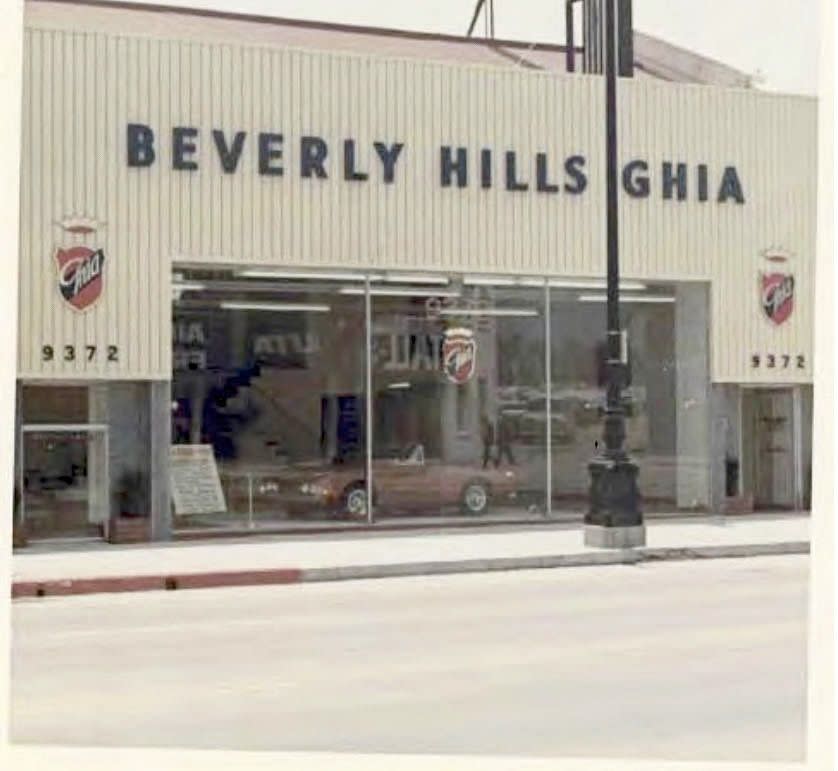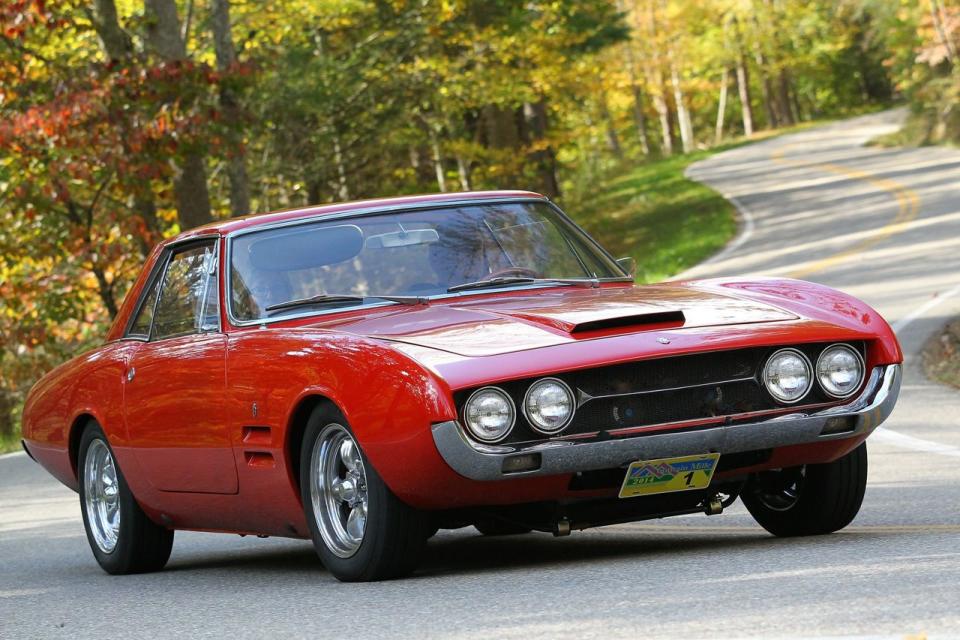American Heart, Italian Soul of Ghia 450/SS

“The whole thing started when I saw a picture on a magazine cover,” said Burt Sugarman, a car guy and automotive entrepreneur turned Hollywood TV and movie producer. The year was 1965, and the magazine was Road & Track.
Sugarman was 26 years old, and the car was the Ghia 230S, a curvaceous Italian coupe—the precursor to the production 450/SS convertible, with Plymouth Barracuda power, that Sugarman would soon shepherd into existence. It’s been a lot of years since then, but his interest has been recently rekindled by once again owning a rare 450/SS—one of just 57 built.
The Beverly Hills-based Sugarman, a lover of Italian supercars who would own multiple Ferraris and become, for a time, the U.S. Maserati distributor, loved the lines of this car from an established carrozzeria(coachbuilder) so much that he promptly decided he had to own a Ghia 230S.
“I flew to Turin to get one, but I was told that it was just a body with no engine,” said Sugarman. He thought maybe he could find an American drivetrain that would fit, and he was not easily deterred. “I said, ‘Let’s get this done.’ I just had that feeling, and wasn’t going to quit,” Sugarman said.
According to a lengthy monograph prepared by Jim MacDougald, who owned the Ghia 450/SS that Sugarman later bought, Ghia had been trying, with increasing desperation since 1963, to find a manufacturing partner for the car.
Ghia saw its spec creation as a replacement for the Fiat 2300 and 2300S coupes, then being produced at Ghia’s manufacturing arm, OSI. But Fiat passed. Sugarman thought he could help. “I went to see my friend John DeLorean, then at Pontiac,” Sugarman said, “and he told me he couldn’t help, but maybe Bob Anderson at Chrysler could be of assistance.”
According to MacDougald, General Motors was at the time very vertically integrated and didn’t work with overseas coachbuilders—but Chrysler had a long and mutually satisfying relationship with Ghia. (One Ghia-built show car, the Chrysler Norseman, went down with the sinking of the Andrea Doria in 1956.)
Sugarman also remembers there was a problem with Pontiac “wide track” platforms fitting Ghia’s narrower body. Maybe both were factors. But DeLorean was interested enough to accompany his friend and golfing buddy Sugarman on a trip to Detroit to meet with Anderson, then general manager at Plymouth.

“The pitch to Anderson was, you give us the engines and drivetrains for 50 to 100 cars, and Ghia/OSI can build the cars over there,” said MacDougald. “Having these cars would bring people into Chrysler showrooms. The 235-horsepower Commando V-8 and TorqueFlite automatic transmission from the Barracuda Formula S [introduced in 1965] were perfect for the project.”
The name 450/SS came from the 4.5-liter displacement of the V-8. A deal was made, and Chrysler’s participation turned out to be far from a passive purveyor of drivetrains. The company dispatched a very capable Italian-speaking engineer and company vice president named Paul Farago to Turin with a Formula S Barracuda.
Tearing everything apart, he determined that a new ladder frame of his own design (as well as a widening and lengthening of the body), was necessary to get everything to fit. As MacDougald relates, Farago also incorporated a “staggering” array of Chrysler parts into the prototype, everything from the instruments to the window winders.
That the 450/SS was American under the skin became a selling point when Chrysler agreed to warranty the cars. Buyers even got Barracuda owner’s manuals—with the non-applicable parts blacked out.
The plan was to create an easily serviced Italian grand tourer that would sell for $8,000, expensive then but still far below the $11,000 to $13,000 a Ferrari or Lamborghini cost at the time. Unfortunately, with the cars being virtually hand built, costs escalated and the final price of $13,200 was too high to fit the hoped-for market gap.
While waiting for production 450/SS cars, Sugarman established the Beverly Hills Ghia dealership, and also took on the “neo-classic” Excalibur. And he also became the U.S. distributor for Maserati.
The first 450/SS cars were finally sold to clients in 1966. There was European distributorship, too, but it was slow going. Production of the 450/SS was terminated at Ghia ended in mid- to late-1967, and that was the end of the Chrysler/Ghia connection, which had begotten such gems as the Rat Pack-favorite Dual-Ghia.

Some cars just have bad luck and bad timing. The 450/SS is gorgeous, and looks good from every angle. It drives like, well, a Barracuda Formula S. MacDougald owned his for six years, and took it rallying after having it tuned. “It performed great,” he said. “With 230 or 240 horsepower, it’s not a rocket ship by today’s standards. But it has good power for its day, is comfortable, corners great, and is easy to drive in challenging conditions.”
Of the 57 450/SS cars produced, MacDougal thinks perhaps 37 still exist in Europe and the U.S. It was always a “what is that?” car. Many other marriages between American muscle and Italian style also had short shelf lives. The British Gordon-Keeble was styled by the great Giorgetto Giugiaro (who also fine-tuned the 450/SS) and only 100 were produced with Corvette power between 1964 and 1967.
There were only 412 Iso Grifos. Sugarman was briefly involved with Intermeccanica, which built only about 500 Ford-engined convertible and coupe Italias. The Dual-Ghia that celebrities loved? Just 117. The most celebrated of the collaborations produced the Ford-powered De Tomaso Pantera, but even there the 7,000 manufactured would be a rounding error for any volume automaker.
Sugarman went on to other things. His resume includes pioneering late-night entertainment programming with concert show Midnight Special, producing movies like Children of a Lesser God and Crimes of the Heart, and getting involved in TV game shows with his close friend Chuck Barris.
He told the Los Angeles Times in 1973, “At 28, I got tired of all the beautiful cars and fun clients; I sold the distributorships and retired to play golf. After about five months of being a playboy, I got bored. That’s when I became involved with show business.”
But now an interest in the Ghia 450/SS has been rekindled. MacDougald got to know Sugarman while writing his monograph, and the old photographs brought up memories. So when MacDougald sold his red 1966 450/SS at a Barrett-Jackson Las Vegas auction in February 2021, Sugarman was the high bidder at $220,000.
The car is BS4008, marking it as one of the first cars to come to the U.S. The auction blurb says the car would come with “provenance back to its original owner and many books, brochures and articles, including original sales brochures.” Also included was a 178-page illustrated monograph. That’s all MacDougald’s work. He sourced a sales brochure from Latvia, and paid $400 for it.
Sugarman said he’s put about 40 miles on his 450/SS, and amazingly enough encountered another one on his drives around Beverly Hills. “I talked to the other owner at a traffic light,” he said. What are the odds?
Although he’s enjoying the car, Sugarman may not keep it long. “It’s a fabulous car, with so few miles on it. I intend to keep it as original as possible. But I’ve driven a number of 450/SS cars over the years—maybe it should go to someone 40 to 50 years younger than me.”
A funny addendum to this story, MacDougald says, is that the early “450/SS” that was exhibited at a San Francisco show to drum up interest—and subsequently appeared in many magazines—was actually a rebadged 230S with Fiat power and fake dual exhausts. Test drives and peeks under the hood were ruled out. That car has now been restored and is in Europe.


 Yahoo Autos
Yahoo Autos 